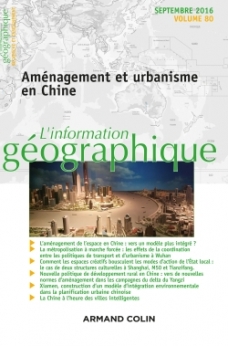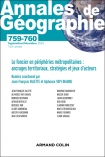
L'information géographique (3/2016)
Pour acheter ce numéro, contactez-nous
Recevez les numéros de l'année en cours et accédez à l'intégralité des articles en ligne.
Quel est le rôle de l’aménagement urbain dans la construction métropolitaine des villes chinoises de second rang ? Comment les différents moments du processus de développement urbain, de la planification, à la production urbaine et à l’usage des espaces produits, permettent d’appréhender les effets politiques et sociaux de cette métropolisation ? Cet article se propose de montrer qu’au niveau de la municipalité de Wuhan, la dynamique de la planification « intégrationniste » des différentes politiques publiques recadre les conditions de négociation du pouvoir municipal avec les arrondissements et les districts, au bénéfice de la dynamique métropolitaine. Du point de vue de la ville vécue, cette métropole en devenir survalorise la mobilité.
How does the urban and transport policies reshape the big cities of central China ? How each step of the urban planning process may provide specific insights in the social and political features of this metropolisation ? This article assumes that the current “integrationist” planning governance of Wuhan municipality helps renegotiate the political balance between the municipality and the districts, to the benefit of the metropolitan dynamic. However strong the drive for municipal primacy over urban planning policies may be, this agenda still faces territorial and administrative limitations. Lastly, from a social perspective, the “spaces of movement” i.e. subway, commercial and touristic pedestrian streets, created by this metropolises in progress will lead us to believe that mobility is valued over place as a driver for urban organization and promotion of metropolitan symbols.

